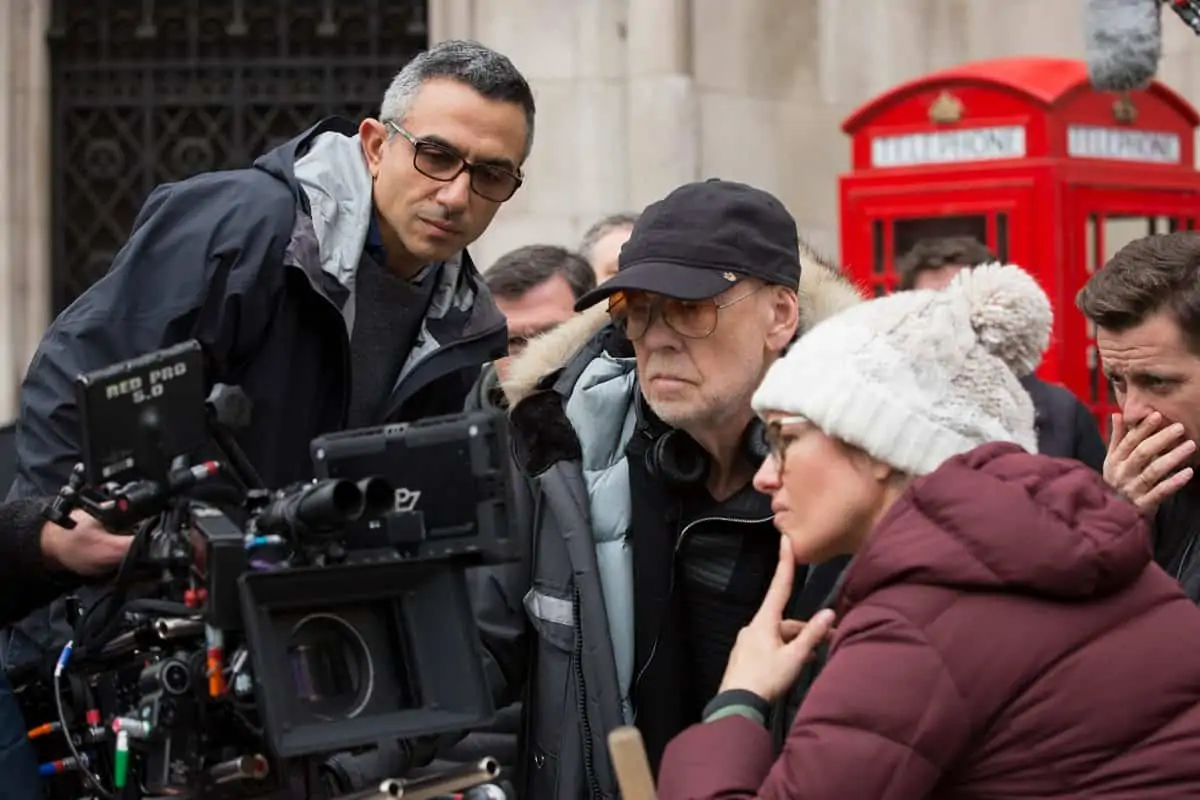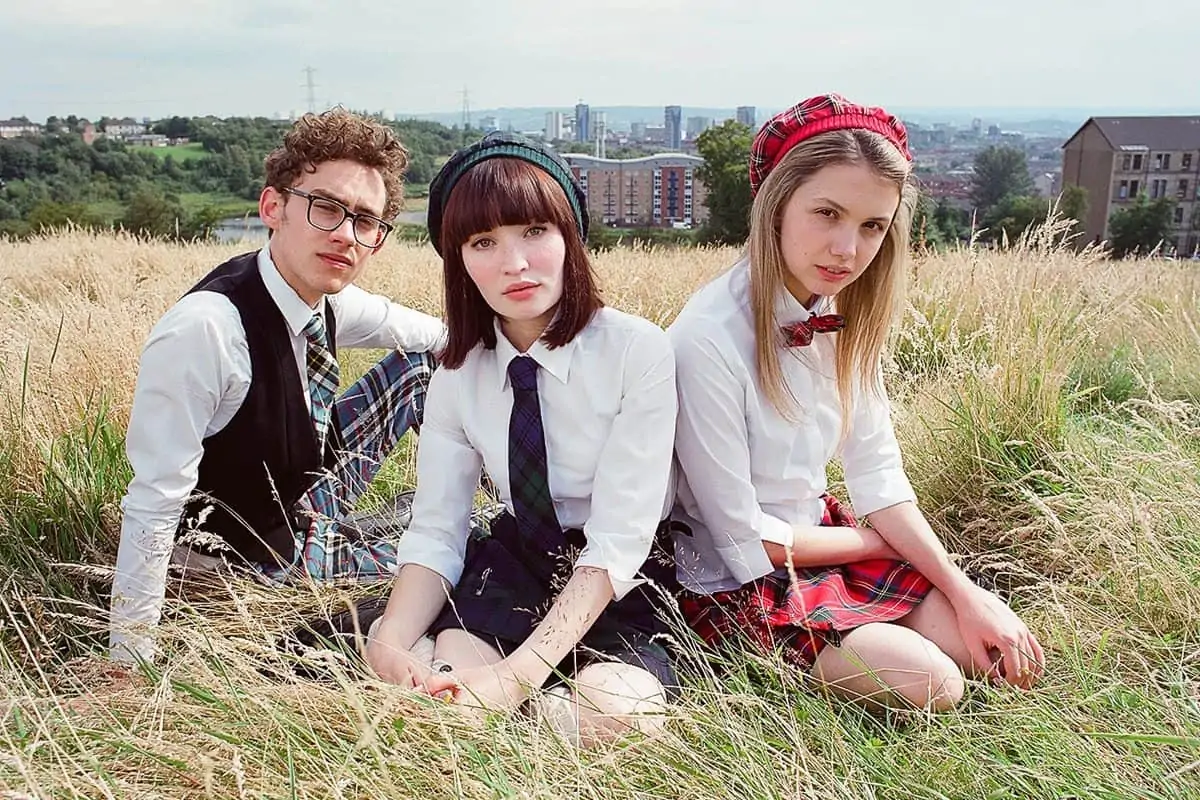All Aboard
Haris Zambarloukos BSC GSC / Murder On The Orient Express
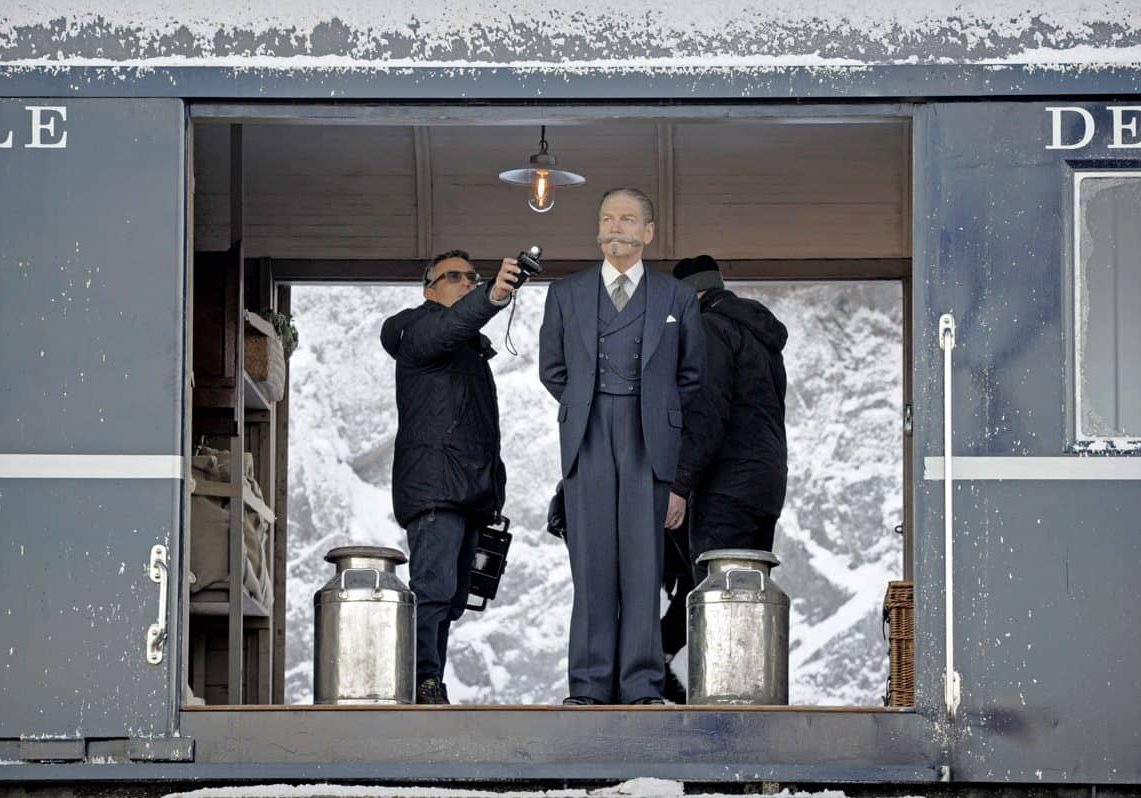
All Aboard
Haris Zambarloukos BSC GSC / Murder On The Orient Express
BY: Ron Prince
A sumptuous steam-train journey through the wintery mountains of Eastern Europe comes to a grinding halt after an avalanche impedes its progress, and the dramatic discovery of a gruesome murder on-board. Thankfully, the famous Belgian detective, Hercule Poirot, is at hand to interrogate all of the passengers and search for clues before the killer can strike again.
Shot on large format Kodak 65mm film, and based on Agatha Christie’s 1934 bestseller of the same name, Murder On The Orient Express, marks the fifth cinematic collaboration between director Kenneth Branagh, who also stars as the moustachioed super-sleuth, and cinematographer Haris Zambarloukos BSC GSC. Their previous successful outings together include: Sleuth (2007), Thor (2011), Jack Ryan: Shadow Recruit (2014) and Cinderella (2015) – all captured on 35mm film.
20th Century Fox announced Murder On The Orient Express in December 2013, and confirmed Branagh as its star and director in November 2015. Along with Branagh, the film features Penélope Cruz, Willem Dafoe, Judi Dench, Johnny Depp, Josh Gad, Derek Jacobi, Leslie Odom Jr., Michelle Pfeiffer, Daisy Ridley and Olivia Colman in supporting roles.
Principal photography involving the stellar cast began at the end of November 2016, at Longcross Studios, where large and elaborate sets were built. These included the movie’s Istanbul and Brod railway station scenes, as well as a specially-constructed railway viaduct where the steam train comes to a standstill due to the avalanche, and where much of the investigative drama subsequently unfolds. Production also encompassed shoots in Malta, doubling for scenes in Jerusalem.
However, several months before the live-action went into full swing, Zambarloukos plotted capture of background plates that would be used as frosty backdrops for the main live-action shoot. This initially involved a bevvy of tests at Longcross, to assess the potential success of deploying an “enhanced environment” made from multiple LED screens, before a small camera team then jetted to the New Zealand alps to shoot a variety of backgrounds for real. It was only after this footage had been stitched together, colour graded and uploaded to the LED environment surrounding the locomotive and carriages, that production on 65mm film could begin for real.
To discover more, Ron Prince caught up with Zambarloukos as the cinematographer was putting the final touches to the movie’s 4K DCP and 70mm release prints, in advance of its global release.
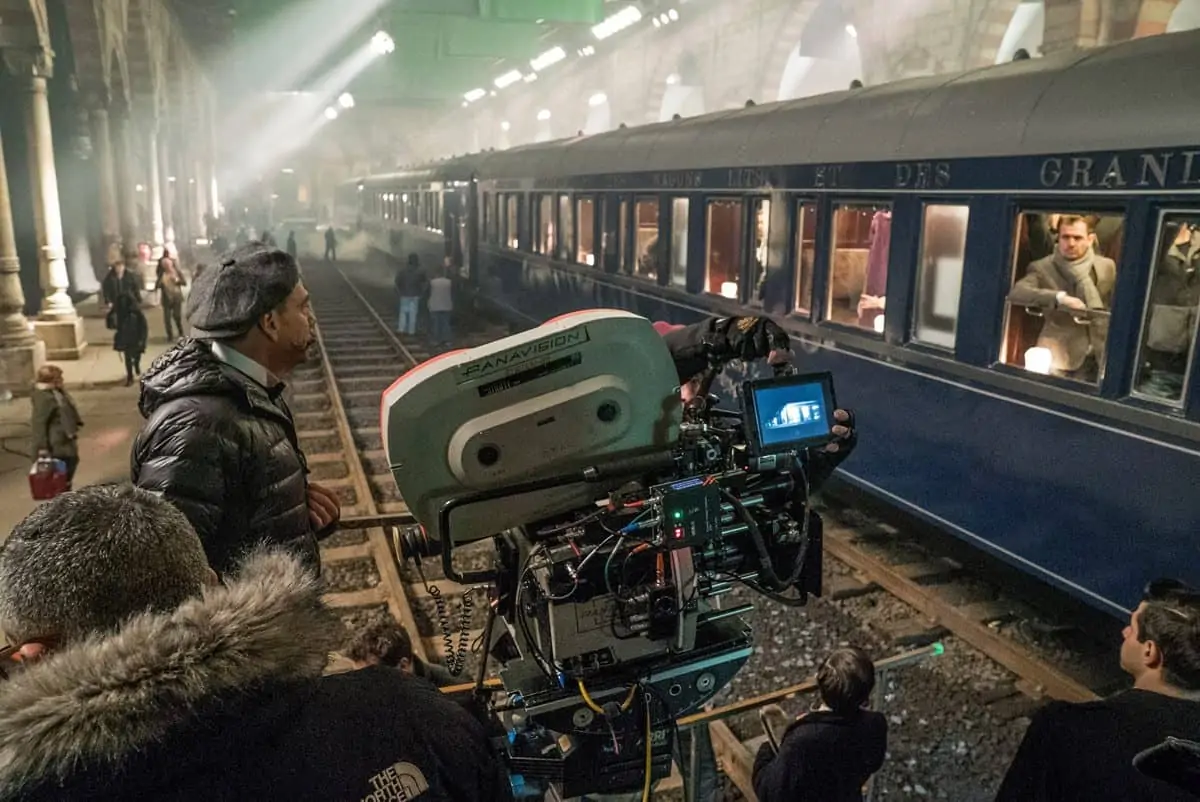
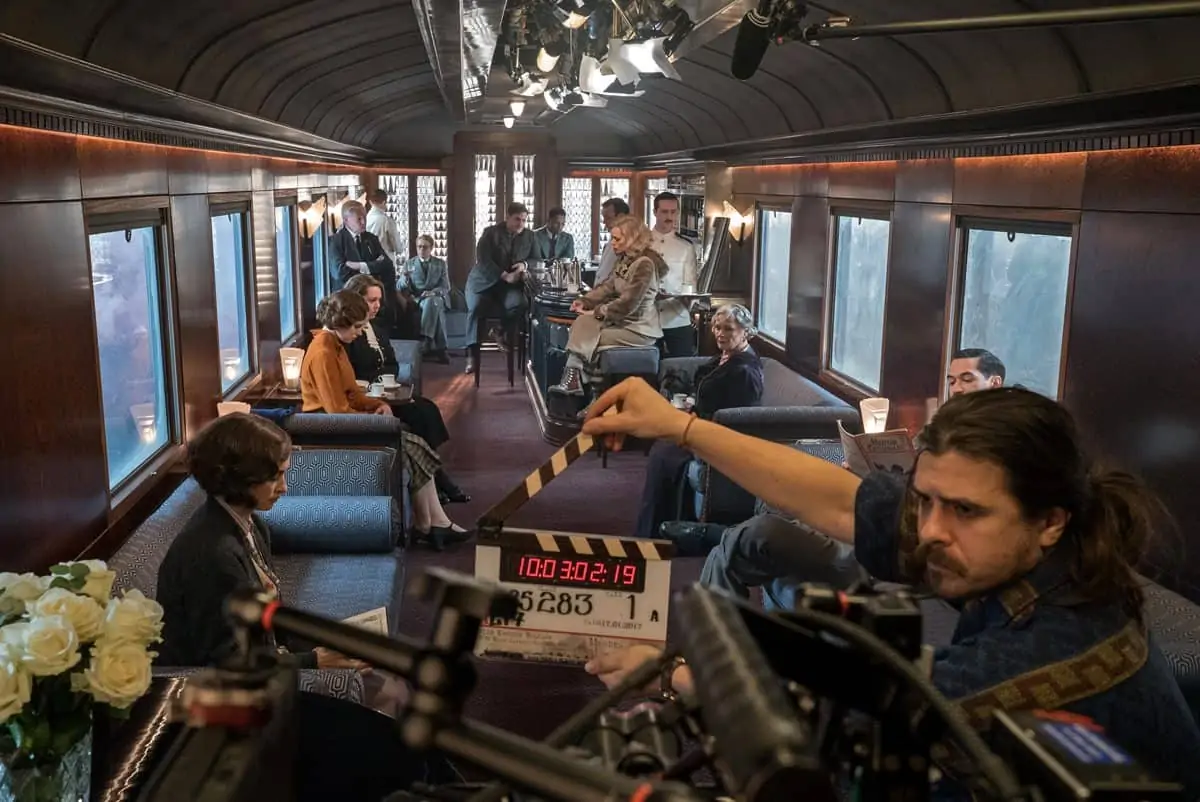
When did Ken first spill the beans to you about Murder On The Orient Express, and what were your initial discussions?
HZ: It was after we had completed Cinderella together, and I was in production on Denial with Mick Jackson. Ken and I had our initial meeting about the production in January 2016. Whilst Murder On The Orient Express is a quintessential “who-dunnit”, Ken also wanted to focus on revenge, to consider why someone might commit a murder, and whether revenge is really worth it – whilst also connecting this classic story to younger and newer audiences.
I reminded him of a long-standing intention we harboured to make a film on large format 65mm film, and thought this represented a golden opportunity. He agreed. After all, he has more knowledge of 65mm film than most other directors having previously shot Hamlet (1995) in large format with Alex Thomson BSC.
Why did you want to shoot the production on large format 65mm film?
HZ: Our No.1 issue was how best to make this an emotional, cathartic story about why the murder took place – to entertain the audience, but to also show something more meaningful, with a bit of gravitas. Plus, we had 13 amazing performers in our cast. Much of our early conversation revolved around their portraiture, and how best to capture every subtle glance and twitch of an eyebrow, without recourse to a series of close-ups.
We reasoned that the only way to deliver that sort of intimate experience was to shoot on 5-perf 65mm film. It is so immersive that the frame just vanishes. The intimacy is amazing. Of course, large format film captures the spectacle of landscapes wonderfully well, but by choosing to go simple, and by keeping the camera relatively still, it echoes the effect of medium format stills photography – you can shoot portraits that let the eye roam and really absorb the character.
Did you watch any previous versions of Murder On The Orient Express?
HZ: Yes, we watched Sidney Lumet’s 1974 film (DP Geoffrey Unsworth BSC) with Albert Finney as Poirot, and the 2006 TV production with David Suchet as Poirot. They are very different to one another, just as Ken’s new version was going to be different. I think theatre directors who make films are never shy of known material, and always consider what can they bring to a story and what can it bring to them, and to the audience. So whilst the previous films were “who-dunnits”, Ken’s was more about the “why”. Also, unlike previous films, we had the opportunity to really make the most of the large format film experience.

So what were your chief creative references?
HZ: A key reference was The Tall Target (1951), directed by Anthony Mann, about an attempted assassination of President-elect Abraham Lincoln, set on a train. It’s a monumental movie, masterfully filmed in B&W by DP Paul Vogel – so authentic, dark and sinister.
I also considered pre-WWII photography in one of my favourite reference books, ‘100 Years Of Photography In Catalonia’. In those images, you notice how the impressionistic, artful photography of the 1920s and ‘30s art deco/art nouveau period gradually changed to a more stark, psychological and social style of photojournalism as Europe progressed towards war. I wanted to bring a certain element of that to the arc of the cinematography – to have a sort of journey from innocence to something more ominous.
But, that said, turning those aesthetic choices into believable reality is another matter altogether. We did a recce from Paris to Verona on the Orient Express, and although we appreciated in the lavishness of the experience, we discovered the landscape is littered with modernity. The practical locations just didn't exist anywhere for telling this story.
So how did you set about the production?
HZ: The key thing was how to create a credible view out of the carriage windows. We knew traditional back-projection or greenscreen techniques would not work – either we’d struggle to get the correct interaction between the characters on the train and the background or, because of the practical confines, that green-spill on the actors, and other refractive issues around the props and sets, would prove too troublesome and time-consuming to sort out.
So, working with VFX supervisor George Murphy, we pursued the idea of shooting an “enhanced environment” backplate in-camera. We contacted VER who have an LED screen system, of the kind you see at live events, to see how we could harness that technology for our purposes. To prove the concept, we shot all manner of background material in the UK, rigged-up a suitable carriage with VER’s enhanced environment behind it at Longcross, and shot some live-action footage on 65mm film against the LED screens. It worked well.
It was really exciting that we now had the chance to combine some of the very latest equipment and techniques with some of the oldest filmic tools and create a journey like no other. I have to thank Fox for being so brave, enthusiastic and supportive in letting us try this out and then giving us the go-ahead.
How did you shoot the background plates?
HZ: It was very technically involved. From our research, the most suitable background snow-scape turned out to be from the TranzAlpine Railway in New Zealand. So we scrambled over there for a fortnight in September 2016. We set up an array of six gyroscoped Alexa XTs, fitted with Panavision Primo spherical lenses – three pointing out from one side of the train, three on the other. We also had an Alexa 65mm on a Libra head capturing the rear view from the train, and a 65mm MOS film camera on a Scorpio head, running separately on a maintenance vehicle, to photograph the front view, which were both fitted with Panavision System 65 lenses. All of cameras were synchronised, with the angles calculated by George, so the VFX team could later stitch the overlapping footage together to give different views of the exterior landscape when displayed on the enhanced environment LED screens. To record the motion of the train along the tracks, we also had a witness camera inside the train, photographing a pendulum against a chart, as well as objects such as glasses of water.
Whilst we were in New Zealand, we also shot aerial footage of mountains and valleys, plus static and panning background plates, in which the VFX team could later composite the physical steam-train, and do towering set extensions of the three-storey viaduct being built at Longcross. It was pretty gruelling, as we often shot 20-hour days to maximise our time and make sure we came back with enough footage.
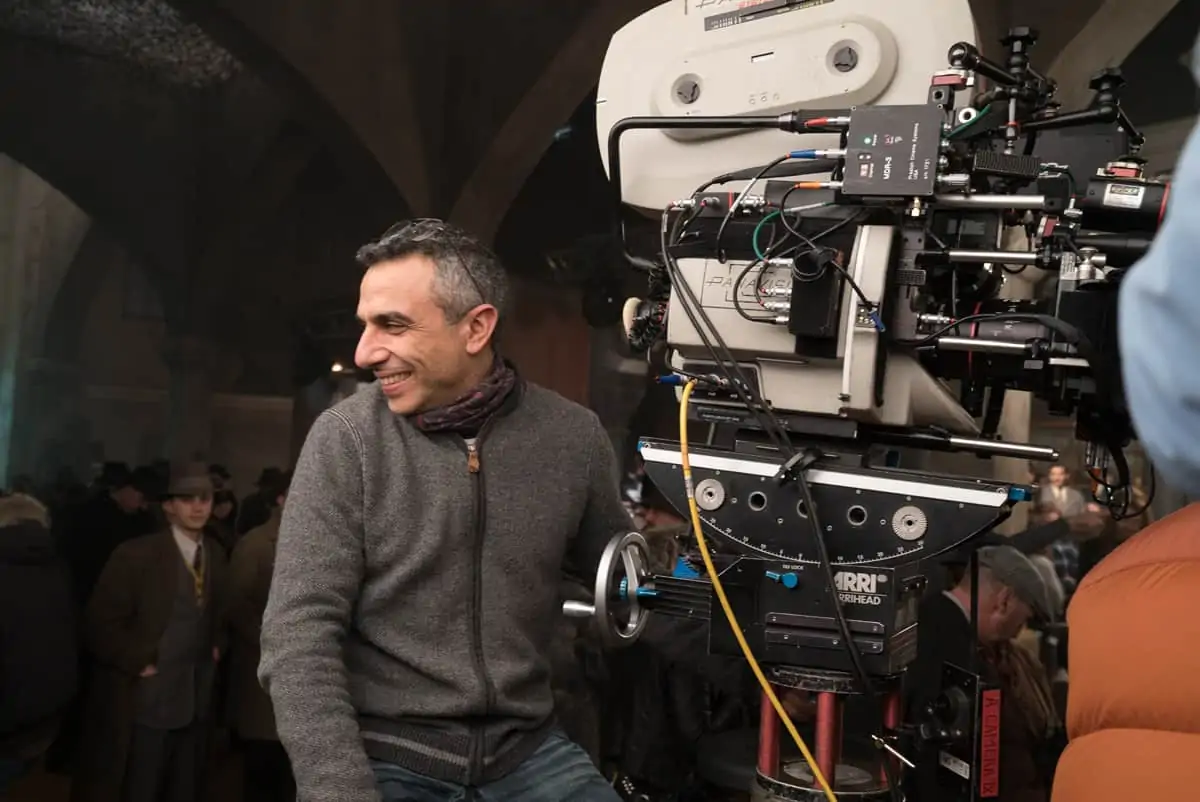
"It was really exciting that we now had the chance to combine some of the very latest equipment and techniques with some of the oldest filmic tools and create a journey like no other."
- Haris Zambarloukos BSC GSC
Did you colour grade the background footage for the enhanced environment?
HZ: Yes. The background plates were carefully graded by Rob Pizzey at Goldcrest who, with the supervision of technical director Laurent Treherne, took into consideration the colour science of how that footage would correlate to the LED monitors on-set, the colour temperature of the on-set lighting and the exposure of the live action on 65mm film.
How did you legislate for the illumination between the enhanced environment and your on-set lighting? How did you go about making it look authentic?
HZ: We definitely had to match the lighting levels and colour temperatures between the LED backplates and the on-set lighting for the 65mm film live-action in the carriages to give a sense of reality.
Knowing the outside backgrounds would be bright, I went through early-on with Jim Clay, the production designer, my requirements for the interior lighting on the train. He and his team were fantastic in incorporating all manner of wall and other practical lights into the set design, not just to create a visually-authentic look, but also to give the correct motivation in the lighting, all in-camera.
Working with my chief lighting technician Julian White, our fantastic practical electrician Joe McGee wired the whole train lighting back to dimmers and made the live-action lighting fully-controllable. It was a great collaboration between the lighting and the set department.
Collaborating with the technicians at VER, we had similar control over the LED enhanced environment. Having global, interactive management over all of the sources allowed me to keep the light flattering on the actors, whilst also enhancing the emotion and the mood of different scenes, and to work quickly.
Of course, the train and carriages on-set were static. To create a proper sensation of physical movement in-sync with the background footage on the LED enhanced environment, Dave Watkins, the special effects supervisor, created an adjustable hydraulic system that could emulate the correct motion. The effect was incredible, it gave the actors and the crew a real sense of place and travelling, even though the whole thing was static.
Tell us about your dailies pipeline?
HZ: Callum Just and his team at Digital Orchard set up a fantastic dailies pipeline at Longcross, operated by dailies colourist Sam Sturgeon, that allowed us to view and grade the processed 65mm film rushes at 2K. This meant that I could make adjustments to the lighting and the enhanced environment as we went along, and give Ken and the editorial team very pleasing images. The other advantage of this set-up was that we also got a superb image to do the quality control and check all of the technical aspects every day – from the camera, focus, and lenses through to lighting, costume and make up, all within an easy distance of the set.
Which cameras and lenses did you choose for the live action?
HZ: We used two sync-sound Panaflex 65mm cameras, the only two that exist, and three Panavision 65mm MOS cameras. Panavision in the UK provided excellent support in getting them ready with new HD video taps and motors, and were on-hand to keep them running to perfection throughout the shoot.
I went with Panavision System 65 spherical lenses, which were initially developed for Ron Howard on Far & Away (1992, DP Mikael Salomon) and were later used by Ken and Alex on Hamlet. They have a beautiful soft quality, perfect for the portraiture in the film. They’re also quite compact, which helps a fair bit as physically the cameras are beasts, weighing-in at around 60Kgs.
What about the aspect ratio?
HZ: Shooting 5-perf 65mm film gives a 2:1 aspect ratio. As cinemas predominantly project in 1.85:1 or 2.35:1, I chose to frame in the wider 2.35:1 format to ensure as much continuity as possible across the different modes of viewing.


Tell us briefly about your crew?
HZ: I could not have asked for a more talented, dedicated and formidable crew.
My A-camera operator was Roger Pearce, assisted by Dean Thompson, with Luke Redgrave operating B-camera, assisted by Pete Byrne. Abbie Catto was our central loader. Steadicam shots were operated by Stamos Tritantylollos, who has a beautiful eye. Hamish Doyne-Ditmas was the director of photography on the second unit cinematography.
I’d also like to thank Julian White and his team, including Dan Lowe, our rigging gaffer. They not only helped with the interactive lighting on the ground, but were also most agile in readying some of the bigger sources such as Tungsten and Mole beams, when I wanted a shaft of light, and helium balloon sources for overall ambience. They developed a series of electric winches so the lighting could be quickly manoeuvred where it was needed, including to the very edge of frame, which will be very handy experience to take to future productions.
Which filmstocks did you choose and why?
HZ: We had an arsenal of three 65mm film stocks – Kodak Vision 3 500T (5219), 250D (5207) and 50D (5203). Aesthetically, they are all fine grain, with lovely colour rendition and deliver an intimate result. On a practical basis, they are seamless, in that you can use them to cover the widest variety of lighting conditions, and switch between them to optimise the length of your shooting day without seeing the join.
I used 500T for the night and interior work. It sees everything – nuances of colour and details in the highlights and black areas. We had several low-light, noir-ish scenes, lit just by practicals, and the 500T captured these perfectly. I think it has made the DI grade easier in that, when we look for a colour or a detail, it’s always there, which is not quite the same with digital footage in the DI.
As we were shooting in mid-winter in the UK, I used the 250D for most of the exterior scenes, along with some 50D. The 250D sees into the shadows and allowed us to extend the shooting day to the very brink of the daylight. If we had to continue shooting at the end of the day, we sometimes switched to the 500T, but that footage mixes really well with the scenes shot on the daylight stock.
The 50D takes the 65mm film experience to another level. For example, we used it for an exterior scene on the viaduct between Poirot and Mary Debenham. The level and the nuances of the colours are extraordinary, especially in the mid-tone where the faces are, compared to what you might get digitally. The sheer definition is awesome. You feel you are really there with Poirot, imbibing the smallest glances and flickers of eyelids. This is 65mm at its most immersive and intimate, and it’s far more dimensional than 3D.

How did you move the camera?
HZ: The main body of the film is akin to a Greek tragedy – in that it doesn’t move from the confines of the train, and the action takes place in 24-hours. Obviously, the camera has to move to keep the visual interest. We predominantly had the 65mm cameras mounted on a Libra head, either on a Technocrane or a dolly, with the camera operated very skilfully by Roger Pearce from a monitor and a remote geared head, and beautiful grip work by Malcolm Hughes and his team. Camera Revolution built all manner of brackets to mount the cameras correctly.
The Istanbul station sequence, during which the protagonists are revealed, is one shot of about three-and-a-half-minutes. It was quite elaborate with Roger on the camera dolly, being pushed around the station, onto the train, and around the carriages. I’m not sure that’s been done before on 65mm, and the level coordination to make it work was extraordinary.
But we also did some Steadicam shots, operated by Stamos. One of these was another long take of two minutes at Brod Station, which sees the camera move onto the train, travel through the carriages, and then come off the train and travel up the platform. This was tough, because the width of the aisle in the carriage meant him having to hold the camera in front, rather than to one side. But Stamos is a big lad, like a bear, and I had him on a diet of spinach and lamb before the shoot to keep-up his strength.
Give us some details about the DI?
HZ: I did the DI with colourist Rob Pizzey at Goldcrest in Soho. It’s an interesting, first-time experience for all of us – shooting on 65mm film, scanning at 8K, posting at 4K, delivering 4K DCPs in different formats, including Dolby Vision HDR, and creating 70mm prints. Thanks to the dailies pipeline operated by Digital Orchard, plus the help of Laurent Treherne at Goldcrest, and Andrew Oran and colour timer Christen Zimmerman at Fotokem, there has been a consistency of image throughout production and post, making the DI and the execution of the digital and film deliverables process easier.
What are your thoughts on HDR?
HZ: HDR is another great tool for cinematographers, and this was my first experience with it. As with everything new, you must remember and be true to your original intent. Murder On The Orient Express is set in the 1930s, with soft pastel colours and naturalistic lighting, but I can see how you might be easily tempted to push towards brighter colouring in HDR. So I have not let the process dictate the look, and stayed true to the original intent to keep all of the different deliverables looking the same. The 4K HDR DCP will look superb, but there will be an extra-lovely, velvety texture on the 70mm projected prints.
How did you move the camera?
HZ: The main body of the film is akin to a Greek tragedy – in that it doesn’t move from the confines of the train, and the action takes place in 24-hours. Obviously, the camera has to move to keep the visual interest. We predominantly had the 65mm cameras mounted on a Libra head, either on a Technocrane or a dolly, with the camera operated very skilfully by Roger Pearce from a monitor and a remote geared head, and beautiful grip work by Malcolm Hughes and his team. Camera Revolution built all manner of brackets to mount the cameras correctly.
The Istanbul station sequence, during which the protagonists are revealed, is one shot of about three-and-a-half-minutes. It was quite elaborate with Roger on the camera dolly, being pushed around the station, onto the train, and around the carriages. I’m not sure that’s been done before on 65mm, and the level coordination to make it work was extraordinary.
But we also did some Steadicam shots, operated by Stamos. One of these was another long take of two minutes at Brod Station, which sees the camera move onto the train, travel through the carriages, and then come off the train and travel up the platform. This was tough, because the width of the aisle in the carriage meant him having to hold the camera in front, rather than to one side. But Stamos is a big lad, like a bear, and I had him on a diet of spinach and lamb before the shoot to keep-up his strength.
Give us some details about the DI?
HZ: I did the DI with colourist Rob Pizzey at Goldcrest in Soho. It’s an interesting, first-time experience for all of us – shooting on 65mm film, scanning at 8K, posting at 4K, delivering 4K DCPs in different formats, including Dolby Vision HDR, and creating 70mm prints. Thanks to the dailies pipeline operated by Digital Orchard, plus the help of Laurent Treherne at Goldcrest, and Andrew Oran and colour timer Christen Zimmerman at Fotokem, there has been a consistency of image throughout production and post, making the DI and the execution of the digital and film deliverables process easier.
What are your thoughts on HDR?
HZ: HDR is another great tool for cinematographers, and this was my first experience with it. As with everything new, you must remember and be true to your original intent. Murder On The Orient Express is set in the 1930s, with soft pastel colours and naturalistic lighting, but I can see how you might be easily tempted to push towards brighter colouring in HDR. So I have not let the process dictate the look, and stayed true to the original intent to keep all of the different deliverables looking the same. The 4K HDR DCP will look superb, but there will be an extra-lovely, velvety texture on the 70mm projected prints.



